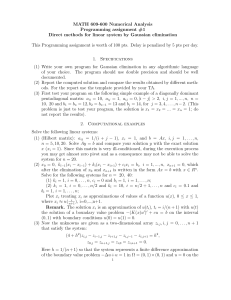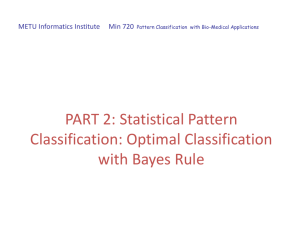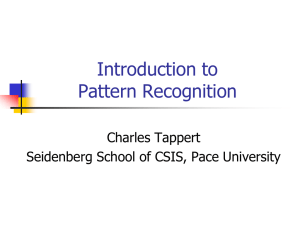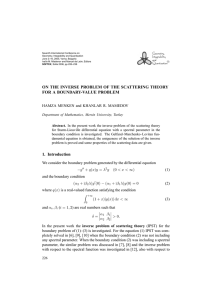Prof. Corso, , SUNY Buffalo Prepared by David Johnson
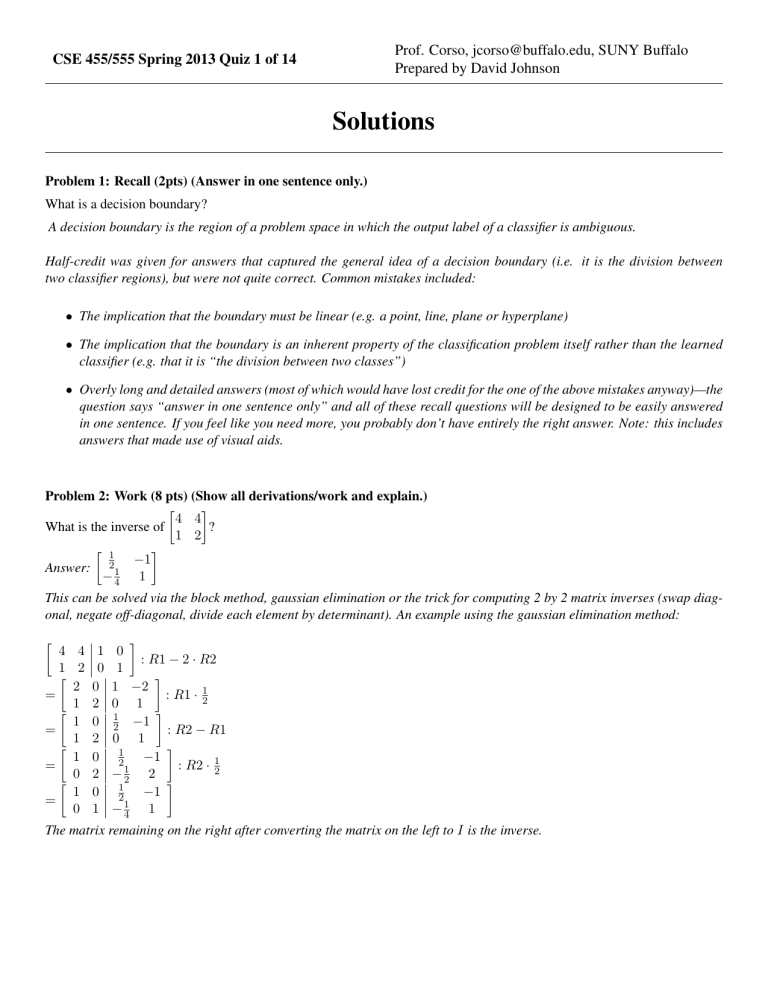
CSE 455/555 Spring 2013 Quiz 1 of 14
Prof. Corso, jcorso@buffalo.edu, SUNY Buffalo
Prepared by David Johnson
Solutions
Problem 1: Recall (2pts) (Answer in one sentence only.)
What is a decision boundary?
A decision boundary is the region of a problem space in which the output label of a classifier is ambiguous.
Half-credit was given for answers that captured the general idea of a decision boundary (i.e. it is the division between two classifier regions), but were not quite correct. Common mistakes included:
• The implication that the boundary must be linear (e.g. a point, line, plane or hyperplane)
• The implication that the boundary is an inherent property of the classification problem itself rather than the learned classifier (e.g. that it is “the division between two classes”)
• Overly long and detailed answers (most of which would have lost credit for the one of the above mistakes anyway)—the question says “answer in one sentence only” and all of these recall questions will be designed to be easily answered in one sentence. If you feel like you need more, you probably don’t have entirely the right answer. Note: this includes answers that made use of visual aids.
Problem 2: Work (8 pts) (Show all derivations/work and explain.)
What is the inverse of
4 4
1 2
?
Answer:
1
−
2
1
4
−
1
1
This can be solved via the block method, gaussian elimination or the trick for computing 2 by 2 matrix inverses (swap diagonal, negate off-diagonal, divide each element by determinant). An example using the gaussian elimination method:
4 4 1 0
1 2 0 1
: R 1 − 2 · R 2
=
=
=
=
2 0 1 − 2
1 2 0 1
1 0
1
2
−
1 2 0 1
1
1 0
0 2 −
1
2
1
1
2
1 0
0 1 −
2
1
4
−
2
−
1
1
1
: R 1 ·
1
2
: R
:
2
R
−
2 ·
R
1
2
1
The matrix remaining on the right after converting the matrix on the left to I is the inverse.

